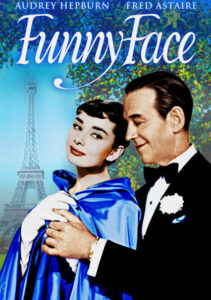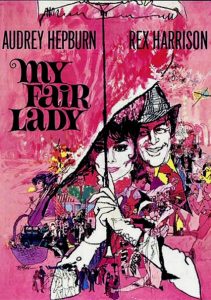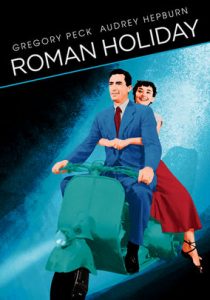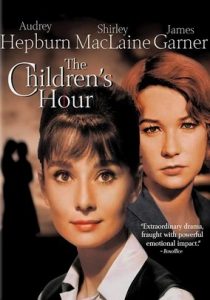Funny Face-1957
Director Stanley Donan
Starring Audrey Hepburn, Fred Astaire
Scott’s Review #1,375
Reviewed July 7, 2023
Grade: B
The results of Funny Face (1957) are mixed, and the word ‘cute’ pops to mind on more than one occasion.
On the one hand, audiences are served a sophisticated look at the fashion industry and the sleek style of Paris, France, in the 1950s. The outfits and set design are fab, revealing the cultured and colorful modeling world, while the makeup and hairstyles match the time with fragrant gusto.
The screenplay is riddled with plausibility issues bordering on offensiveness and silliness. It also provides a good look at the patriarchal mindset of the time. The message is twofold: The fashion industry and Hollywood equally embraced these norms when the film was made.
In a word, the overall film is dated.
New York City fashion photographer Dick Avery (Fred Astaire) is tasked with finding a model for a new assignment. Discouraged, he is struck by the beauty of Jo Stockton (Audrey Hepburn), an intellectual bookstore employee he photographed by accident.
He convinces Jo to accompany him to France, where he continues photographing her against Parisian backdrops. At the same time, they scramble to pull together a fashion show along with crusty Maggie Prescott (Kay Thompson), a fashion magazine publisher.
Dick and Jo fall for one another, only to find hurdles to overcome along the way.
The musical numbers are plentiful but second-tier. Bouncy songs like ‘Funny Face’ and ‘On How to Be Lovely’ are decent but not memorable. The highlight is ‘S, Wonderful,’ which appears during the finale and perfectly wraps the Paris experience and the film in a shiny bow.
Comparisons can be made to An American in Paris (1951), not just because both are set in Paris, use the same tune (S Wonderful), and were composed by George Gershwin. There’s more buried beneath the surface that ties the two films together.
Both lead characters, Jerry and Jo, wind up with the wrong partners, who are, in reality, inappropriate for each other. Jerry should be with the comparable Milo, while Jo should be with the dashing and artistic Flostre (Michael Auclair). Instead, Jerry chooses the waifish Lise while Jo lands the ancient Dick.
Astaire is old enough to be Hepburn’s grandfather, which makes the romance odd.
Of course, Milo and Flostre are made to be the foils in An American in Paris and Funny Face. They are merely obstacles to be overcome by the preferred couple.
Another irritant is the demeaning nickname that Dick calls Jo, ‘funny face.’ Hardly a dog, Hepburn is quite beautiful, although the film makes the audience assume she is wrong for the modeling world. She fits right in, looking perfect in every dress or costume she dons or photograph she appears in.
A better casting choice would not have been classically beautiful singers or actors such as Barbra Streisand or Bette Midler, though admittedly, neither had surfaced at that point.
Though shot on a soundstage, Funny Face rebounds from implausibility with gorgeous ariel views of historic Parisian landmarks that envelope the glitter of the theme.
Shots of the Eifel Tower, Arc de Triomphe, and the broad Champs-Elysees are robust and made me rewatch this sequence again.
In parallel, the Greenwich Village, New York City setting, where other events in the film take place, is an intelligent choice to define the artistic and bookish characters.
The opening titles of Funny Face (1957) are creative and polished, reflecting the maturity of the subject matter and style of the 1950s.
With no chemistry, Hepburn and Astaire carry the film as best they can with a dated and tame screenplay.
Oscar Nominations: Best Writing, Story, and Screenplay-Written Directly for the Screen, Best Costume Design, Best Cinematography, Best Art Direction-Set Direction



